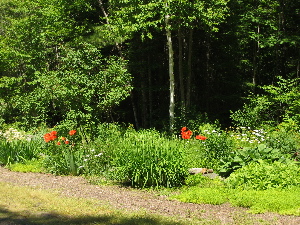YOUR FIRST STEPS IN THE GARDEN
Now is this scary or what? You’ve dressed in your grungiest jeans, found a pair of gardening gloves, and have even gotten your tetanus shot, now what?
Let’s back up a bit. You really SHOULD do a little planning first. It will help. You must remember that a garden needs a long-range plan in order to be what you want it to be, so relax for a few minutes and decide what it is you really want out there beyond the kitchen door!
Do you want a vegetable garden? Or do you want a flower garden? Are there any shrubs, trees or walls that you need to be cognizant of? (Don’t forget the house!) If you can, try to put it down on a piece of paper. It doesn’t have to be anything fancy at all. Just scrap paper will do. There are those that say you need a pretty formal plan you can refer to later. If that will help you, or if that’s your style, go for it. (There are even Garden Journals that will include those planning pages. It might not be a bad idea to get one, if you haven’t already done that.) However, that isn’t really necessary.
You will probably find that as a gardener, you will change your mind often. I usually have a MAJOR plan in mind and the rest just fits in around that. That’s where the shrubs, trees and walls come in. Unless you want to move them, it’s a good idea to work these into your plans…because they are THERE and, at least temporarily, a permanent part of your garden. So make a basic plan with those in place.
Now it’s decision time. Flowers? Vegetables? or perhaps both?
Let’s deal with veggies first. They need sun and a fairly good size area depending on the size of your family and whether they love veggies. A rectangular spot in full sun will fill the bill nicely. So, draw that in your plan. Make it close enough to the house that it doesn’t become a chore to visit it for weeding and harvesting! You can fill that with rows of your favorites.
BUT- AH, HA! You need to get a soil test done! The results will tell you what you need to add as amendments to the soil. You can tell the Extension Service whether you will be planting veggies, or perennials, blueberries or other specialties like roses, etc. and they will give you very specific recommendations for those spots. This is a great time to do the soil amending because it’s easier to dig it in before you plant!
This will give you something to do for a few days (weeks?). Then come back, and we’ll go on to the next step!




